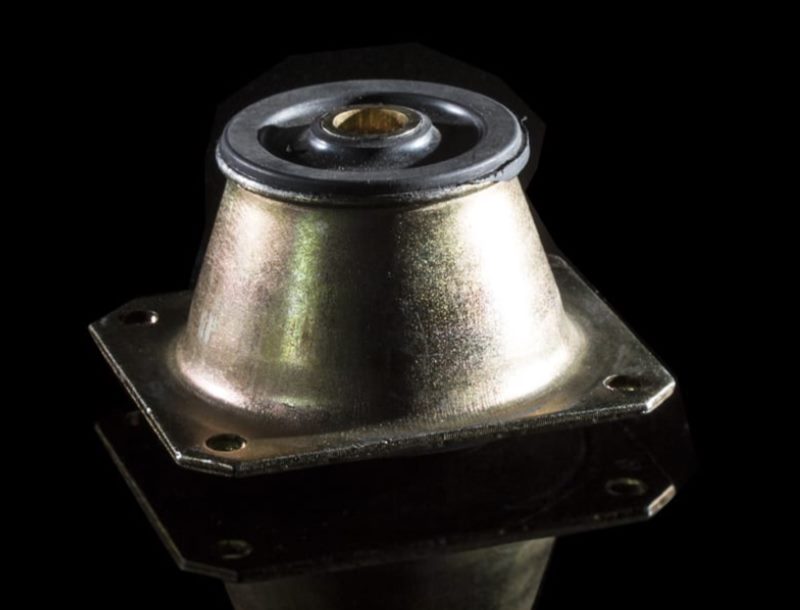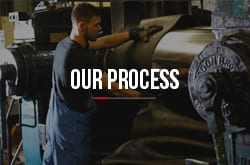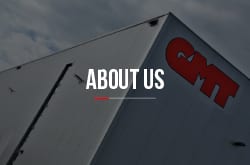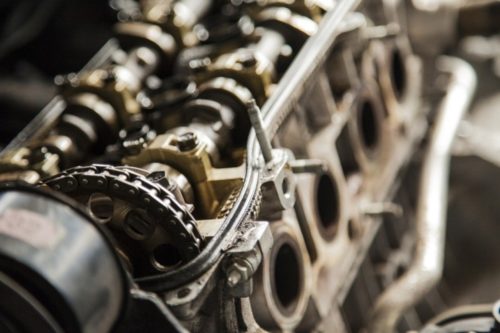A Guide on the Different Types of Motor Mounts
Engine mounts are an essential component of your machine or vehicle, connecting the engine to the chassis. They are designed to absorb shocks, vibration and noise during operation, which is crucial for preventing damage to both the motor and the chassis. This post discusses the different types of engine mounts available, their pros and cons, and compares solid rubber vs hydraulic motor mounts.
The Different Types of Motor Mounts
Solid Rubber Motor Mounts
Solid rubber motor mounts, or transmission mounts, are made of a solid rubber cushion bolted to the engine transmission and chassis via steel-backed plates. The combination of materials allows movement and flexibility, minimises shocks to the system, and can extend the engine motor and other vehicle components’ life. You tend to find this type of engine mount in cars and trucks.
This type of engine mount is robust and holds the engine in place, and absorbs vibration and noise well for a relatively low cost. Regardless of quality however, they will eventually begin to crack and tear, particularly under a heavy load, generating more movement and reduced performance.
Hydraulic Motor Mounts
Hydraulic motor mounts, or hydro motor mounts, are filled with a fluid gel or liquid. Hydraulic motor mounts are designed to dampen and absorb engine vibrations before they reach the chassis. Their primary use is motors that produce a lot of high and low frequency vibration, and are preferred in vehicles or industries that require noise to be at a minimum level. This type of motor mount is most commonly used in the automotive, marine and construction industry, as they can be tuned to offer better performance over a broader range of conditions than standard rubber engine mounts, which tend to be selected to offer optimum performance over a relatively narrow range of conditions.
Due to the components of hydraulic motor mounts, higher production costs result in higher expense; therefore, they’re less budget-friendly. Although fluid leaks and collapse has been known to happen with extensive use, this can be mitigated by correct assessment of the conditions and production of a high quality mount.
Metal Motor Mounts
A metal motor mount creates a strong, secure connection between the engine and the chassis, enabling a large amount of power to be transferred to the wheels, which remain rigid even under a heavy load. However, due to the metal-on-metal connection, these types of engine mounts transmit the most vibration and noise.
Electronic (Active) Motor Mounts
Electronic engine mounts are designed to vary the mount’s stiffness and damping characteristics to reduce noise and vibration, dependent on the vehicle’s load and speed. This vehicle data is monitored and fed back to the control system using sensors. Various methods of control can be used to reduce engine vibrations such as a vacuum-actuator or a counter shake mechanism.
Polyurethane (PU) Motor Mounts
Polyurethane motor mounts are a longer-lasting alternative to rubber engine mounts, offering the benefits of rubber and solid steel engine mounts combined. These properties can provide enhanced performance and feel of the road, but tend to come at a higher cost. They also tend to be less resistant to heat, which can cause problems in an automotive application. Moreover, the bonding of PU to metal (especially stainless steel) is more difficult to achieve than with rubber.

Solid Rubber vs Hydraulic Motor Mounts – What’s the Verdict?
Solid rubber and hydraulic motor mounts have slightly different properties, but which is better? Well, that depends on the industry, budget, and personal preference. Whilst a hydraulic engine mount can be tuned to exceed the performance of a solid rubber across a broader range, they also tend to be more expensive and less durable than solid rubber mounts. Opting for a solid rubber mount ensures long-lasting wear for lower load capacities, and at a lower cost, too. Our advice is to consider your industry, budget, and personal preference if you’re looking at replacing your worn engine mounts.
Engine Mounts at GMT Rubber
At GMT, we stock many types of engine mounts, designed to deliver reliable performance and protection no matter your industry or application. Contact a member of the team to discuss designing a bespoke engine mount for your needs.










